Cal Crutchlow: Britain's MotoGP hero describes the physical demands of life at the limit

Cal Crutchlow sits at the top of MotoGP. The last time a Briton held a similar position in motorcycle racing’s blue riband series, a drilled hole through a crash helmet to enable a last-minute cigarette on the grid was not regarded as an outrageous gesture.
As with almost every aspect of life since 1979 there is little to resemble a sport that once was. LCR Honda & HRC rider Crutchlow may be one of the most outspoken and determined motorcycles racers since the heyday of Barry Sheene (the 1976 and 1977 World Champion was admired for his steely approach as much for the many other aspects that contributed to his fame, including consuming cigarettes on the grid) but the acute difficulties of Grand Prix racing has bred a pack of elite-level athletes.
The 32-year-old Isle of Man resident reached the peak of an eight-year MotoGP career with his third victory at round two of the 2018 series in Argentina; the scene of another riveting and controversial episode in a motorsport that is unparalleled for thrills and frequent ‘script-tearing’.
This week the circus heads to the bevy of kinks and undulations that is the Circuit of the Americas in Austin, Texas and a layout that provides a prime example of the conditioning needed to steer a 160kg, 220mph explosion-on-wheels. 3.4 miles and 20 corners equates to two minutes of hard work for 20 laps; 67 miles and 45 minutes of racing.
All but eight of the 2018 MotoGP grid have breached or are reaching their thirties (and Valentino Rossi’s 39 years hikes up the average) but the majority are cycling, fitness and training obsessed; primed to be able to excel at 20 events and at least half a dozen test sessions a year.
Crutchlow says: “The physicality of riding a MotoGP bike is on par with some of the top level sports in the world… it is just a different discipline and set of demands.
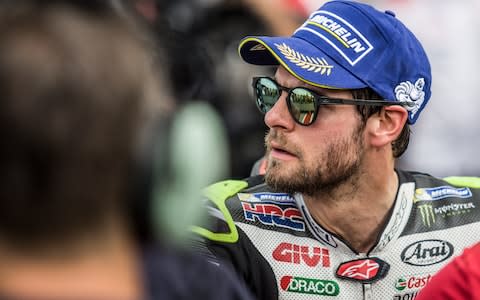
“We don't have the same repetitive movement – like a runner, for example - and have to control different situations and that places extra stresses on the body.” Those stresses include heavy braking and arm-yanking acceleration that tip G-forces over the twenty-mark (as much as a fighter pilot). Physical might is a major requirement.
One of the most revered trainers in motorcycle sport is South African Aldon Baker. The Florida-based expert has guided and helped five of the last six AMA Supercross champions, a series only second to MotoGP for spectator numbers and following. The 48-year-old worked with late 2006 MotoGP World Champion Nicky Hayden at the time of his Honda pomp and has since established his status further to be the most in-demand specialist in motorcycle sport.
“A lot of MotoGP depends on strength,” he said from the confines of his ‘Bakers Factory’ complex in Sumter County and where he is developing a comprehensive off-road site in conjunction with the KTM Group. “Cal, for example, is a little ball of muscle. I’ve been on bicycle rides with him and he is not big but he’s stocky. In one way you need to be strong to be able to handle these MotoGP bikes but also [body] weight is critical.”
“It is important to read the rider and see where his strengths are,” he emphasises. “I remember with Nicky back in the first days of the 1,000cc bikes he had to be strong especially in changing direction on the bike but he was not a small guy and was not lacking [strength] so we adapted the programme towards flexibility and things like yoga. Cardio was also important but it depends on the riding style. A guy like Valentino [Rossi] will be very precise and smooth while a guy like Marc Marquez, or even Cal, move around a lot and even wrestle the bike. In a perfect world you need to be as strong as possible while being as lean as possible.”
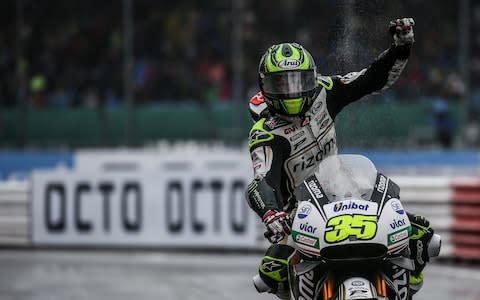
The principal difficulty in pursuing optimum MotoGP fitness comes through finding activities that not only hike the adrenaline-fuelled heart rate to similar levels but also the rigours of manhandling the bike.
“Even in Argentina, which is just round two, you ride on the first day and you get up the next day and you’re sore,” Crutchlow explains. “You cannot ride anything else that replicates that GP bike. Using a Superbike on a track day or a motocross bike is different because it means different muscles. I doubt you’d get up the next day after motocross with an aching neck, whereas in MotoGP you will because you’re doing 220mph and when you sit up your helmet is being pulled off your head because of the wind. The G-forces you are dealing with is a lot. I honestly don't think you can train for it.”
“Some feel more fatigue on the upper part of their body and others feel it more in the legs,” he adds. “It depends on their ‘structure’. I remember talking to Mick Doohan a while back and he said he always felt his legs were giving a little bit more than the upper body, and that was in the days of the 500cc two-strokes. Different bikes, different stresses: it is very individual. For me Marquez has really developed more muscle, if you look back a few years then you can see a difference in his stature and maybe he felt he needed more strength for the way he rides which is very loose. There are a lot of little details and personal training really has to be personal in the case of road racing and adapted to the athlete.”
Many racers such as Marquez and WorldSBK Champion Jonathan Rea regularly indulge in motocross and others use Flattrack, Supermoto, Enduro and other disciplines to keep their throttle hand prime. Rossi’s dirt track ‘Ranch’ near his home of Tavullia is almost a synonymous with the Italian as his iconic #46 race number. Crutchlow goes slightly against the grain and is proof that no single discipline or method is the key to success. “I don't ride a bike in between races,” he states. “I rode my trials bike once before the first test and I rode a motocross bike for 25 minutes in California and that was it for the whole winter.”
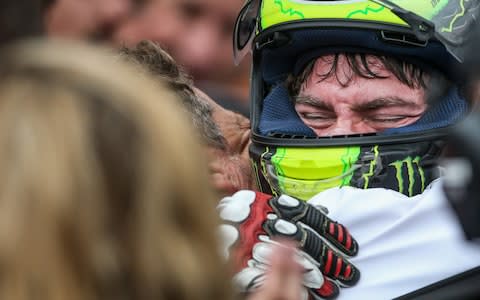
Cardiowork for most MotoGP riders (just check the exploits on their social media accounts) means cycling. And Britain’s leading GP star is an avid pedaller who counts Tour de France star (and fellow Isle of Man resident) Mark Cavendish among his group of close friends. He accrued some 11,000km in the engine-less saddle before the 2017 season. It’s his preferred method of shedding the pounds and surging the pulse.
“I used to run a little bit but I don't go in the gym because I put on too much weight, no matter what I do,” he claims. “I went through a phase years ago of doing a light weights programme but I still get bigger. I don't have any problem physically with upper body strength on the bike, sure you get a bit tired but I believe – compared to my competitors and without going to the gym – I am on a good physical level with them. So I don't bother with it. I just ride my bicycle and that's my preference, simply because I love it and I know what works for me.”
It has to work. MotoGP not only asks a lot of various muscles groups and concentration but also strains the human ‘engine’ as much as the combustion. “Heart rate is massive,” Crutchlow asserts. “I bet over a race the average is 180bpm. I’ve had 192, and it depends on the race, the track and the weather is a factor for how hard and tiring it can be.”
For some individuals 180bpm is VO2 max (the most amount of oxygen that can be used during exercise). It means an incredible stress on the body and considering that MotoGP racers struggle to reach that zone in normal exercise routines says a lot for the mysterious and hard-to-chart effects of adrenaline.
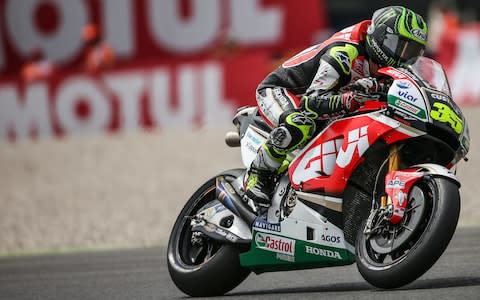
“I cannot get to 180bpm if I am cycling like crazy on a hill,” says factory Aprilia representative Scott Redding, another one of three Brits in MotoGP. “185 is my max in a VO2 test…so the rest must come from adrenaline. You don't feel that you are at 180 when you’re on the bike. You should be struggling for breath and you’re not.”
“Your heart rate is so high that it is difficult to get it at the same level any other time,” says Moto2 GP winner Sam Lowes. “It can be 185 on the bike, peaking at 189, and for me to do that on a treadmill I’d have to be going at 25kph! Adrenaline is difficult to understand.”
Red Bull KTM’s Bradley Smith is renowned for the scientific approach to his profession. “My highest heart rates have come on the MotoGP bike and I haven’t been able to replicate it in cycling or running, so that does show the level we are riding at,” the 27-year-old from Oxford says. “I think adrenaline plays a role, as does heat dissipation with the leathers we are wearing.”
“Another thing is confidence: flow and mental state,” he offers. “There are some days when you are not in a battle and you can be at 93% heart rate and you feel like you are dying, and there are others when you’re in the flow and you’re hitting 103 and you feel like you have another step you can make. You can never quantify the mental side, and things like focus where you can be just a little bit off and things become ten times harder.”

Grand Prix riders do have techniques to help. Crutchlow mentions the importance of breathing and describes some of the finer points of getting around a racetrack as quickly as humanly possible. “On these GP bikes now we hold our breath for such a long time entering the corners. If a zone is, say, on average four seconds on a hard-braking corner then you’ll be holding your breath for that time and you might have five of those in a lap as well as other places.”
“Not everybody is the same but if you try and breathe in the braking zone then it is actually hard to stop the bike because you are concentrating on breathing rather than the deceleration process!” he adds. “You go tense when you brake, you tense your whole body. When you lift a weight in the gym – and the bike is a heavy weight with all the G-forces – you are doing the same.
“Imagine doing it for something similar to 20 laps and around a track like Austin, with all those bends. We try to get time to breathe and suck it in on the straight but a lot of the straights are not exactly ‘straight’ and you are still fighting the bike.”
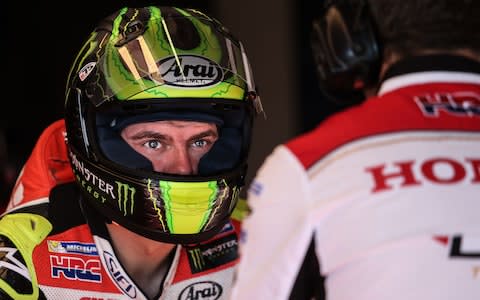
Reactions and focus are paramount in MotoGP and can also come as a consequence of physical preparation. Considering that riders cannot just wheel their racebike out of the garage when they feel like it, then the ability to instantly perform for lap-times at the start of a race weekend is another impressive facet of a remarkable job.
Perhaps the reason why people like Crutchlow and opening round victor Andrea Dovizioso (also 32) are still excelling in MotoGP in their thirties comes with the ripening of their experience, maturity and physical metric ‘curves’. Even though MotoGP is punishing and draining, continual competition is somehow maintaining and boosting performance potential.
“People ask about mental training and, yes, there are things online where you can follow and catch balls to keep that eye focus but I still don't think you can get around the actual habit of back-to-back practice of what you are actually doing,” says Baker. “It has to be a natural instinct because it is so quick.”
British fans and followers of the black-and-white #35 will be hoping the heart and limbs that find fresh extremes and milestones carry on for a good while yet.
For tips and advice, visit our Advice section, or sign up to our newsletter here
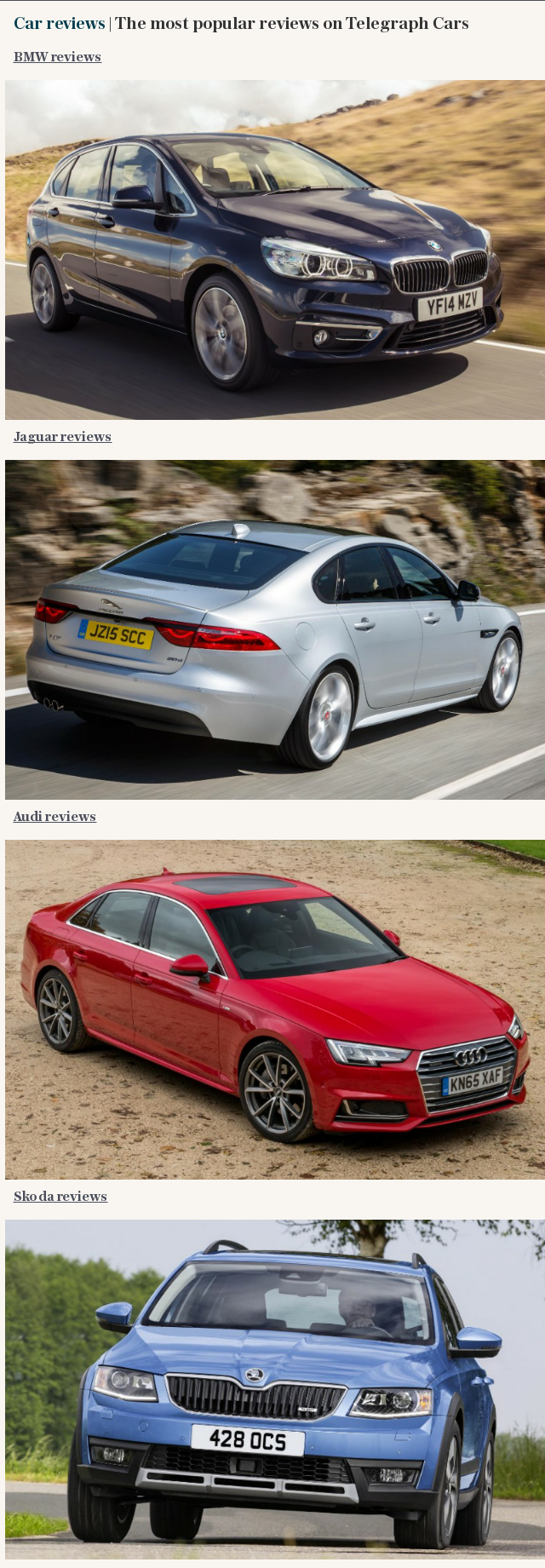

 Yahoo News
Yahoo News 